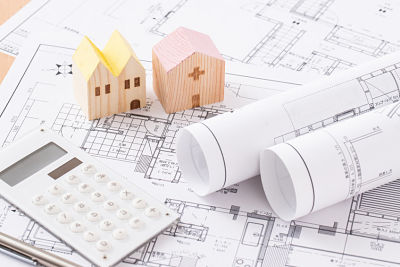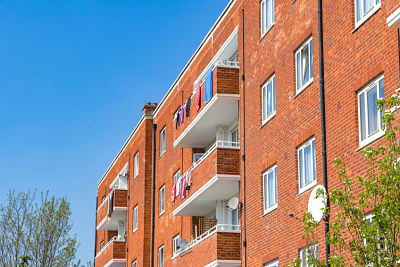
A few years back this strategy was all the rage among property afficionados, but recently stories of the thousands made flipping properties have widely diminished. For various reasons the government has been keen to make this strategy more difficult for property investors, but it hasn’t lost its relevance all together. Flipping is still a good strategy, but now it needs a little more planning and a lot more number crunching than it did before.
What is the ‘Flipping’ Strategy?
You’ll be familiar with this strategy as it applies not just to property but also to cars, furniture, electronics, and more. In its basic form it means buying something at a low price, fixing it or adding to its value in some way and then selling at a higher price.
The point of this strategy is to make a lump sum of cash. It is most used by people who are looking to quit their jobs, as a few property flips in a year should be enough to replace annual income. It is also commonly used by people looking to raise enough money for buy to let deposits.
There are a few different ways to make this strategy work, for obvious reasons these strategies tend to work better in a market that is growing.
Traditional flipping involves buying a property for a low price, usually one that needs a lot of work or one that is greatly reduced because the owner is looking to sell quickly. You refurbish the property to bring it up to a higher standard. The refurbishment forces the property to appreciate which in turn increases the capital tied up in the property. You then sell the property for more than you bought it for. Your profit is how much you make selling the property minus the purchase price and the costs of refurbishment combined. It is common to flip properties with partners as a joint venture, especially if you don’t have all the up-front capital needed to purchase the property.
There are other more nuanced flipping strategies, flip and hold is like buy to let and flipping a short lease is another popular flipping strategy. We aren’t covering these here, so spend some time researching these niches for further information.
Pros of Property Flipping
If you do it right flipping can provide a high ROI, so it’s a good way to make a lump sum fairly quickly.
If you can refurbish the property quickly yourself or have connections which mean you can do it for a lower cost, you’ll see higher returns.
If you’re flipping purely for re-sale you don’t have any of the hassles of managing tenants, maintaining the property or monitoring the long-term health of the property market.
Refurbishment costs are considered capital investments and so can be deducted from your capital gains tax when selling the property. This can help boost the ROI you get from a flipped property.
Cons of Flipping
The government was keen to shut this down as a strategy which was one of the main reasons for introducing section 24. While mortgage relief is all but off the table when it comes to tax deductions, it was already difficult to get a mortgage for flipping a property. Unfortunately, section 24 also means that capital gains rules are changing. From April 2020 a capital gains bill will have to be paid within 30 days of the sale of a property (for second or let properties). This will make it harder to maximise your tax-free allowance which was previously one of the pros of this strategy.
If you’re flipping to sell there’s no passive or residual income, you’re just making lump sums, so you can only continue to make money if you are flipping.
It isn’t easy to manage a large-scale refurbishment. You will need to manage a lot of people, invoices, expenses, design decisions and a whole lot more. You either need to be good at managing projects or you’ll need to hire a project manager to do this for you.
Flipping to sell means you can’t be financially bailed out by rising prices in the long term unless you are flipping to hold which has its own risks and ties your capital up for longer.
The tax treatment for flipping is unfavourable no matter how you look at it. If you are flipping as an individual, the profit you make selling the property must be added to any other income you make in that tax year and you must then pay income tax on it. This can increase your tax band if you’ve made a lot of money. The only exception to this is if you can prove your intention was to keep the property and the opportunity to sell came up unexpectedly. If you flip the property via a company, the company is subject to the usual corporation tax treatments. You will need tax advice or to be knowledgeable in the ways of taxes in order to protect as much of your profit as possible.
You aren’t supposed to use mortgages for flipping. Plenty of people do, and you may get away with it once or twice, but even if there is no early repayment penalty on your mortgage a lender may notice the second or third time you repay a mortgage early. The lender can refuse to lend to you again and can also alert other lenders making it impossible to get finance in the future.
You can use finance to flip a property through a bridging loan, but this isn’t cheap. The interest on a bridging loan tends to be higher than a mortgage and you will need a higher up-front deposit, but the loan can also cover refurbishment costs as well. If you’re using finance, you’ll need to factor these higher costs into your calculations when finding the right property to flip.
While we’re on the subject of number crunching, with this strategy there are a lot of costs to consider, for instance: SDLT, solicitor fees for purchase and sale, estate agent fees for the sale (unless you sell privately), broker fees if arranging finance, and, survey fees. While you’re holding the property, you may also need to pay for insurance, utility bills, and, council tax. To find the right property you’ll need to know how much these costs will come to as well as how much the refurbishment will cost, and you’ll need to understand how much the property should sell for to cover these costs and make you a profit. Once you know all this, you’ll get a good idea of how much you need to purchase a property for in order to make a profit.
What’s Needed to Make Flipping Successful?
This really requires a property in a high demand area, you can refurbish the property to the highest standards, but if there is no demand for buying or renting in the area you aren’t going to make as much as you’d like. The longer it takes you to sell the longer your capital is tied up.
You’ll need an eye for design to allow you to see a run-down property and to envisage it’s potential.
Connections in the trade industry or the ability to refurbish a property yourself is an asset as this can drive down the costs of refurbishment.
A good understanding of the market in an area is useful. If there isn’t a lot of demand you can find properties relatively cheap, but they are more difficult to sell on. If there is a lot of interest in an area though there may be a lot of competition which makes it hard to find a competitively priced property. You’ll need to purchase properties in an area where they sell quickly to owner occupiers. Unlike an investor an owner occupier will go over budget for a house they’ve fallen in love with.
Look for properties that appeal to as many people as possible. Essentially you want people fighting over your property, in a bidding war the seller is the real winner. A two or three-bedroom semi-detached or a terraced property would be ideal as it would appeal to first and second-time buyers. Bungalows also work well if you can find them at a reasonable price, because they are in high demand.
The bad news is that everyone else who’s looking to flip is looking at the exact same properties you are. In a high demand area, you need to look for properties that might put light weight flippers off, a property with some structural damage or a property in need of a heavier refurbishment would be less likely to sell to those who are just dipping their toe in.
When Flipping Goes Right
A 20% ROI is considered good for flipping. Keep flipping and you can end up with decent capital that can either be used to keep flipping properties or that can be invested in a different strategy or any scheme that provides a high return.
When it goes right you acquire capital quickly through a fast and efficient sale and refurbishment.
When Flipping Goes Wrong
If it goes wrong, it’s usually because the number crunching wasn’t done properly, you buy a property for more than you should, spend more on the refurbishment than you should and then end up with little or no return because you struggle to sell the property for a higher price.
If you buy in the wrong area it can take a long time to sell, tying your capital up for a long time.
If you rush the refurbishment or you don’t have an eye for design, you can end up making the property look cheap which can diminish its value.
Who Does a ‘Flipping’ Strategy Suit?
If you are a good negotiator, or you are adept at snapping up a bargain in a property auction you stand more chance of finding a good property to flip. If you are also good at spotting the potential in a property that doesn’t look its best, you’ll find it easier to spot a property ripe for flipping.
You’ll need a lot of spare time and to be a good builder or successful DIY enthusiast or you’ll need to have good contacts in the trade industry. Where this is the case you can flip a property quickly with a lower cost refurbishment.
The costs associated with flipping can be reduced if you have some cash to play with or don’t require as much finance to fund your project.
If you are familiar with the buying and selling process and the property market in general, it will stand you in great stead for running this kind of strategy.
For those looking to try out this strategy for the first time, it may be an idea to start off with a joint venture. Find a partner you can trust and one who has successfully flipped properties before. You’ll earn some money and gain valuable skills along the way.
You will need time to find the right property and either good project management skills to manage the refurbishment (if you are using contractors) or the time to refurbish it yourself.
To maximise profit, you’ll need to be able to competently research the area, the property and the local market.



